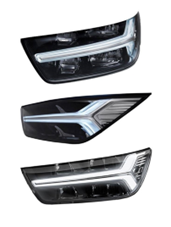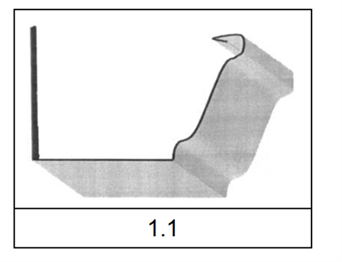Trade marks
Case T-541/23: Reversing the Board of Appeal, the EU General Court found no likelihood of confusion between the figurative sign shown (above) and the earlier figurative mark (below) for identical goods (tea etc in class 30). It concluded: "in view of the low degree of visual similarity, the predominant aspect of the goods intended for mass consumption, the low degree of conceptual similarity and the lack of phonetic similarity, the Board of Appeal erred in finding that there was a likelihood of confusion between the signs at issue for the relevant public in the European Union, even if the level of attention of the relevant public is below average."
Case T-473/23: The Court upheld a Board of Appeal decision that an EUTM for duch puszczy, registered for alcoholic beverages (except beer) in class 33 was invalid. It agreed that the term was descriptive of the goods in question under Article 7(1)(c), as it means "spirit of the forest" and has entered Polish current parlance to refer to a homemade moonshine spirit produced in the Podlaskie region.
Cases T-345/23, T-358/23 and T-530/23: In three cases, AC Marca Brands succeeded in overturning Board of Appeal decisions. The cases concerned EUTM applications for SANITIEN, Sanitix and saniteb + (figurative). AC Marca Brands opposed all three applications based on its earlier word and figurative marks for SANYTOL registered for goods relating to hygiene and disinfectant in classes 3 and 5. The Court found there was a likelihood of confusion, taking into account the distinctive character enhanced by the use of the SANYTOL marks.
 Case T-260/23: The Court annulled a decision of the Board of Appeal, finding that the 3D EUTM application filed by Volvo for goods in classes 11 and 12 pictured had distinctive character. It said: "the headlights at issue differ significantly from other forms of headlights commonly found on the relevant market. The features which make up the headlights at issue enable the visual individualisation of the models of headlights and cars belonging to the applicant and enable them to be distinguished from models of headlights and cars from other manufacturers. Accordingly, it must be considered that the mark applied for, taken as a whole, has the minimum level of distinctive character required."
Case T-260/23: The Court annulled a decision of the Board of Appeal, finding that the 3D EUTM application filed by Volvo for goods in classes 11 and 12 pictured had distinctive character. It said: "the headlights at issue differ significantly from other forms of headlights commonly found on the relevant market. The features which make up the headlights at issue enable the visual individualisation of the models of headlights and cars belonging to the applicant and enable them to be distinguished from models of headlights and cars from other manufacturers. Accordingly, it must be considered that the mark applied for, taken as a whole, has the minimum level of distinctive character required."
Designs
 Case T‑329/22: The Court upheld a decision that this RCD for "tubes for discharging water; chutes" lacked individual character. The Court said: "having regard to the high degree of freedom of the designer in developing the contested design and in the absence of significant differences from the earlier design, it is appropriate to confirm the assessment of the Board of Appeal that the conflicting designs produce an identical overall impression and, consequently, the contested design does not satisfy the condition relating to individual character."
Case T‑329/22: The Court upheld a decision that this RCD for "tubes for discharging water; chutes" lacked individual character. The Court said: "having regard to the high degree of freedom of the designer in developing the contested design and in the absence of significant differences from the earlier design, it is appropriate to confirm the assessment of the Board of Appeal that the conflicting designs produce an identical overall impression and, consequently, the contested design does not satisfy the condition relating to individual character."
 Case T-210/23: In a case concerning an application for a declaration of invalidity of a design for plant support stakes, the Court found there was disclosure of the earlier design (pictured) , saying: "given the specific nature of the product incorporating the contested design and the sector in which it is used, the fact that that design could have been disclosed through at least three major projects and that the products incorporating it were transported in full view of the public more than a year before the application for registration of the contested design was filed is sufficient, in the present case, to consider that such a design has been the subject of disclosure to the public, within the meaning of Article 7(1) of Regulation No 6/2002."
Case T-210/23: In a case concerning an application for a declaration of invalidity of a design for plant support stakes, the Court found there was disclosure of the earlier design (pictured) , saying: "given the specific nature of the product incorporating the contested design and the sector in which it is used, the fact that that design could have been disclosed through at least three major projects and that the products incorporating it were transported in full view of the public more than a year before the application for registration of the contested design was filed is sufficient, in the present case, to consider that such a design has been the subject of disclosure to the public, within the meaning of Article 7(1) of Regulation No 6/2002."
All pictures taken from court documents
 Issue 163
Issue 163
 Issue 163
Issue 163